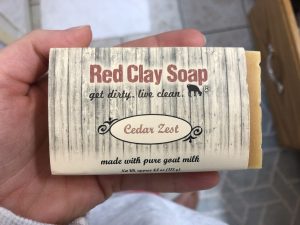Small Changes—Big Difference
Claire Maybin
Living in the Greenbelt this past year has encouraged me to make more sustainable choices in my everyday life. Now, the challenge is taking the habits that became norms in the Greenbelt and continuing them while at home and wherever we each may live next. It is not likely that everyone in the word will become a vegetarian, or commit to zero waste, or strive to live a carbon neutral life, but there are small changes that everyone can do that cumulatively can make a big difference. Many of these initiatives that revolve around emissions, pollution, waste, etc., are trying to address huge systems that are interconnected and often difficult to present solutions. Waste, for instance, is not simply the discards of individual mass consumption it also comprises the waste generated at each phase of production, in mines or fields, in factories and shops, all of which far exceed consumer waste—and a few small changes can decrease that supply chain and production chain, reducing waste, and the products you choose can also decrease your waste footprint.
One initiative I have been particularly fond of embracing has been sustainable beauty products! I have recently started using a shampoo bar from lush, replacing large clunky plastic containers with this small little coffee infused bar. Lush, a cosmetic brand, pride themselves in their handmade products that are sourced ethically and are offered without any plastic packaging. Their shampoo bars are concentrated shampoo so a little goes a long way; one bar could equal up to three bottles of liquid shampoo. This is just a small change but think about the huge difference it would make if everyone used bar shampoos! Second, I ditched the liquid body wash and liquid hand soap, and both were replaced with good old fashion bar soap. My favorite has been Red Clay Soap from a local goat farm in the Traveler’s Rest area.  This sweet soap contains up to 25% goat milk in each bar. The great thing about goat milk is that it is loaded with natural acids, vitamins and minerals making it the perfect exfoliator and moisturizer. Again, a simple switch but one that cumulatively makes a significant difference. Bar soaps and bar shampoos use little to no packaging and do not contain harmful chemicals that other liquid alternatives may. One small step towards less waste, a successful step towards sustainability.
This sweet soap contains up to 25% goat milk in each bar. The great thing about goat milk is that it is loaded with natural acids, vitamins and minerals making it the perfect exfoliator and moisturizer. Again, a simple switch but one that cumulatively makes a significant difference. Bar soaps and bar shampoos use little to no packaging and do not contain harmful chemicals that other liquid alternatives may. One small step towards less waste, a successful step towards sustainability.
Goat Milk Soap, Handmade Goat Milk Soap. (n.d.). Retrieved from https://www.redclaysoap.com/
Lush Shampoo Bars. (n.d.). Retrieved from https://www.lushusa.com/hair/shampoo-bars/
Murray, R. (2002). Zero waste. London: Greenpeace Environmental Trust.